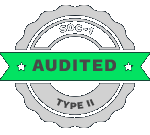If it’s acceptable to have a mobile app launched in the market and the forum is being flooded with complaints and negative reports regarding bugs, then surely, testing of Mobile Apps isn’t required at all.
Table of Contents:
Building a mobile application in today’s world is not at all a challenge but making an error-free one requires extensive planning. In the recent few years, the mobile app market has seen a boom in the development rate and in its demand. So, to stand strong in this competitive platform, a developer should be thorough with the concepts and stages of the development process.
To satisfy customers’ demands and to earn respect in this industry, a developer should be much confident with his/her app’s launch in the very first attempt. The methods involved in this application building procedure is known as Mobile App Development Lifecycle. It involves all the System Development Lifecycle (SDLC) phases but from a mobile device’s perspective. There are stages involved in this development process which is really challenging and the end result (the app itself) may bring a drastic revolution in the mobile app industry.
Mobile Development Lifecycle
Having not much difference from the SDLC for desktop apps or the web ones, Mobile Development SDLC has eight phases of application development.
-
Research and Pre-development planning: This phase is one of the vital ones involved in the procedure of mobile app development. All of the brainstorming and research had to be made in this period of time. A developer should try to include every feature that is presently absent in that genre of application. Lastly, the cost of development and other expenses should be taken into consideration.
-
Prototyping Mentally: This phase includes all the ideas involved in the scope of development. All of the thoughts must get a visual representation.
-
Feasibility check of Technology: Dealing with an app’s feasibility in the back-end systems. The developer must have the knowledge regarding an app’s dependency upon its format and platform.
-
Prototype building: An app is not successfully built unless you can have an experience of its working procedure with your physical touch. Involve the stakeholders in this process and try to fetch necessary feedbacks.
-
Development of an application and designing: It is the most important phase dealing with the development of the User Interface and rear end coding of a mobile app.
-
Agile methodologies: It is the most successful method of app development as it allows further editing, and an addition of features and does not restrict the evolution of the application.
-
Mobile app testing: After building an application, there is a need to check for errors and necessity of debugging.
Mobile Application Testing
App development procedure without App testing is a complete failure. Mobile app testing in SDLC is the process which checks for the efficiency, usability and consistency of an app. This very process includes a handful amount of challenges:
-
The app must be a downloadable one
-
As single scripting does not work on many devices, the introduction of different keystrokes, menu structures, and input methods is necessary.
-
Getting access to the right set of devices may be a challenge in this ever upgrading world of OS versions and choice of devices.
-
Compatibility check s necessary as apps may not work due to resolution incompatibility issues.
-
Mobile network providers use different infrastructures for their networks limiting the information flow.
Conclusion
Testing must be a part of Mobile development SDLC as a developer won’t be very happy when a mass will start complaining about his/her failure and begin questioning the developers’ knowledge and skills, if there happens to be an error (it may be a minor one, won’t matter actually). Debugging is a challenging aspect and requires patience and specific skills, to avoid further harassment. When it comes to bug-free mobile applications, BluEnt is one of the leading mobile app developers in the heart of New York City. From app testing to handling the entire mobile application development lifecycle model, their multiple years of experience makes them flawless in the field.
Maximum Value. Achieved.



 How Much Does App Development Cost? A Budget Estimation Guide
How Much Does App Development Cost? A Budget Estimation Guide  Using Angular to Develop Mobile Apps Can Be a Game Changer for Your Business
Using Angular to Develop Mobile Apps Can Be a Game Changer for Your Business  Pros and Cons of the WooCommerce Plugin for Online Merchants
Pros and Cons of the WooCommerce Plugin for Online Merchants  Mean Stack vs LAMP Stack: Which One is Better for Your Business?
Mean Stack vs LAMP Stack: Which One is Better for Your Business? 
